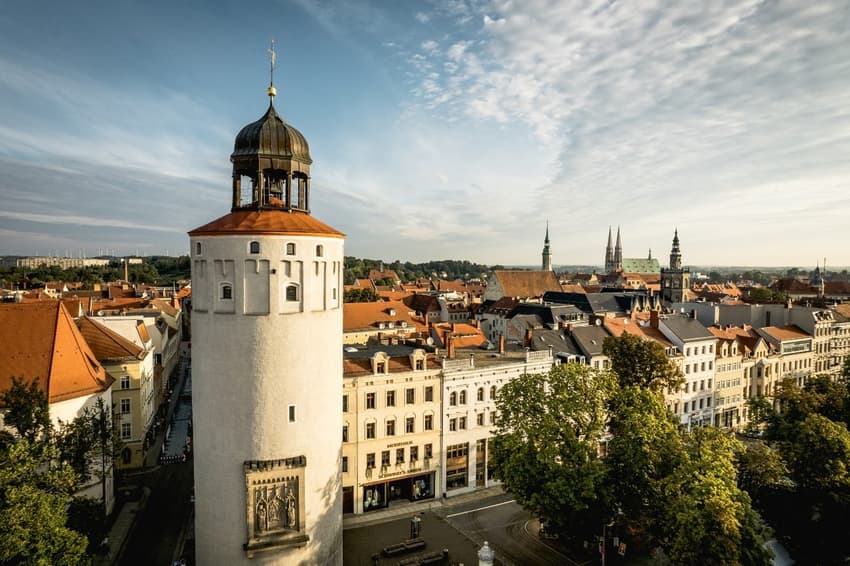Which parts of Germany have the highest (and lowest) costs of living?

A new comprehensive study compared the cost of living in all 400 districts and independent cities over a period of three years to find where in Germany living costs are the highest - and lowest.
For the report, the Institute of the German Economy (IW) together with the Federal Institute for Research on Building, Urban Affairs and Spatial Development (BBSR) put together a price index that includes housing and living costs such as rent, electricity, gas and food.
"Life must remain affordable, no matter where in Germany," said IW study author Christoph Schröder.
But the results show that people in many parts of the country are struggling with spiralling costs.
However, the overall cost of living in Germany’s eastern states - with the exception of Berlin and its surrounding area - remains significantly cheaper than the average.
READ ALSO: REVEALED: The German regions where house prices have doubled in six years
“Even though incomes in eastern Germany are lower in some cases, people there have a cost advantage over many large cities [in western Germany],” stated the report.
Every city and town was given a cost of living ranking, with a value of 100 representing the average around Germany.
According to the study, the idyllic, agriculturally-rich southwest of Saxony - called the Vogtland (index value of 90) - is Germany's most affordable place to live. Housing costs are about 32 percent cheaper than the German average, whereas other costs are only 0.3 percent lower.

Apples growing in October in Gopplasgrün, Saxony, part of Germany's Vogtland and the cheapest part of the country to live in. Photo: picture alliance/dpa | Kristin Schmidt
The second and third cheapest places are the quaint town of Greiz (90.5) in Thuringia and the charming city of Görlitz (90.6) in Saxony, often dubbed Görliwood due to all of the Hollywood productions which have taken place there.
READ ALSO: 10 things you never knew about the German state of Saxony
The cheapest area in western Germany is the district of Pirmasens (90.7) in Rhineland-Palatinate, which sits on the border with France.
Braunschweig and the district of Neumarkt in der Oberpfalz in Bavaria are exactly in line with the national average.
The most expensive places to live were, not surprisingly, Munich (125), the suburbs surrounding Munich (117), Frankfurt (116) and Stuttgart (115).
According to the study, people have to pay the most in large conurbations and the districts surrounding them, especially in popular residential areas such as those on the edge of the Alps or Lake Constance.
How can housing costs become lower around Germany?
Despite helpful subsidies for lower-income families such as Wohngeld (housing allowance), the results “show that regional policy in Germany still has homework to do,” said the study authors.
They called for better infrastructure in the areas surrounding big cities - be it through a better internet connection or public transportation - in order to make these areas more desirable.
They also called for notoriously difficult building regulations to be simplified in order to tackle Germany's growing housing crisis.
“In order for more and cheaper housing to be built in places where there is a shortage...new construction should become easier - and for this, there needs to be relief when it comes to bureaucracy and building regulations,” they wrote.
READ ALSO: Why does Germany keep missing its house-building targets?
For the study, the researchers used around 24 million data, among others from online portals such as Rewe.de and Verivox.de.
These were weighted according to average consumption - based on the basket of goods of the Federal Statistical Office - and combined to form a regional price index.
For housing costs, all available asking rents were collected and converted to existing rents using a model.
Vocabulary
Cost of living - (die) Lebenshaltungskosten
Groceries - (die) Lebensmittel
Affordable - bezahlbar
Building regulations - (die) Bauvorschriften
We’re aiming to help our readers improve their German by translating vocabulary from some of our news stories. Did you find this article useful? Let us know.
Comments
See Also
For the report, the Institute of the German Economy (IW) together with the Federal Institute for Research on Building, Urban Affairs and Spatial Development (BBSR) put together a price index that includes housing and living costs such as rent, electricity, gas and food.
"Life must remain affordable, no matter where in Germany," said IW study author Christoph Schröder.
But the results show that people in many parts of the country are struggling with spiralling costs.
However, the overall cost of living in Germany’s eastern states - with the exception of Berlin and its surrounding area - remains significantly cheaper than the average.
READ ALSO: REVEALED: The German regions where house prices have doubled in six years
“Even though incomes in eastern Germany are lower in some cases, people there have a cost advantage over many large cities [in western Germany],” stated the report.
Every city and town was given a cost of living ranking, with a value of 100 representing the average around Germany.
According to the study, the idyllic, agriculturally-rich southwest of Saxony - called the Vogtland (index value of 90) - is Germany's most affordable place to live. Housing costs are about 32 percent cheaper than the German average, whereas other costs are only 0.3 percent lower.

The second and third cheapest places are the quaint town of Greiz (90.5) in Thuringia and the charming city of Görlitz (90.6) in Saxony, often dubbed Görliwood due to all of the Hollywood productions which have taken place there.
READ ALSO: 10 things you never knew about the German state of Saxony
The cheapest area in western Germany is the district of Pirmasens (90.7) in Rhineland-Palatinate, which sits on the border with France.
Braunschweig and the district of Neumarkt in der Oberpfalz in Bavaria are exactly in line with the national average.
The most expensive places to live were, not surprisingly, Munich (125), the suburbs surrounding Munich (117), Frankfurt (116) and Stuttgart (115).
According to the study, people have to pay the most in large conurbations and the districts surrounding them, especially in popular residential areas such as those on the edge of the Alps or Lake Constance.
How can housing costs become lower around Germany?
Despite helpful subsidies for lower-income families such as Wohngeld (housing allowance), the results “show that regional policy in Germany still has homework to do,” said the study authors.
They called for better infrastructure in the areas surrounding big cities - be it through a better internet connection or public transportation - in order to make these areas more desirable.
They also called for notoriously difficult building regulations to be simplified in order to tackle Germany's growing housing crisis.
“In order for more and cheaper housing to be built in places where there is a shortage...new construction should become easier - and for this, there needs to be relief when it comes to bureaucracy and building regulations,” they wrote.
READ ALSO: Why does Germany keep missing its house-building targets?
For the study, the researchers used around 24 million data, among others from online portals such as Rewe.de and Verivox.de.
These were weighted according to average consumption - based on the basket of goods of the Federal Statistical Office - and combined to form a regional price index.
For housing costs, all available asking rents were collected and converted to existing rents using a model.
Vocabulary
Cost of living - (die) Lebenshaltungskosten
Groceries - (die) Lebensmittel
Affordable - bezahlbar
Building regulations - (die) Bauvorschriften
We’re aiming to help our readers improve their German by translating vocabulary from some of our news stories. Did you find this article useful? Let us know.
Join the conversation in our comments section below. Share your own views and experience and if you have a question or suggestion for our journalists then email us at [email protected].
Please keep comments civil, constructive and on topic – and make sure to read our terms of use before getting involved.
Please log in here to leave a comment.